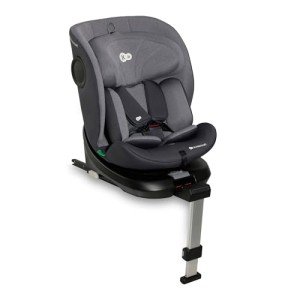9 Signs That You're A Pram And Pushchair Expert
Prams and Pushchairs: A Comprehensive Guide for New Parents
Browsing being a parent includes a multitude of decisions, among the most considerable being the choice of a suitable pram or pushchair. These necessary items act as a haven for babies and a means of transportation for caregivers. Whether walking through the park or running errands, a good pram or pushchair can enhance the experience for both moms and dad and child. This short article provides an extensive take a look at the types of prams and pushchairs offered, their features, and important considerations to make before buying one.
Comprehending Prams and Pushchairs
While the terms “pram” and “pushchair” are typically utilized interchangeably, they describe a little various products. Understanding the distinction can help in making an educated choice.
Term
Description
Pram
Usually designed for babies, prams have a completely flat structure, enabling the baby to rest conveniently. They typically include a carrycot and appropriate for newborns approximately about six months old.
Pushchair
Developed for older babies and toddlers, pushchairs frequently have a more upright seating position. They are flexible and can normally be reclined or adapted to cater to the child's growth, beginning with around six months and reaching preschool age.
Types of Prams and Pushchairs
When picking a pram or pushchair, different designs will accommodate various parenting requirements and lifestyles. Here are the primary types offered on the marketplace:
Traditional Prams
- Traditional, vintage designs with a strong carrycot.
- Ideal for newborns.
- Typically bulkier, suitable for leisurely strolls.
Pushchairs
- Light-weight and frequently foldable, ideal for travel and quick outings.
- Can be front-facing or rear-facing.
- Consist of features like adjustable handlebars and reclining seats.
Travel Systems
- A combination of a cars and truck seat and a pushchair.
- Practical for car-to-pushchair shifts without interrupting the baby.
- Normally more pricey however worth thinking about for their multifunctionality.
Multi-Functional Strollers
- Deal various setups, allowing for a carrycot, sit-up seat, or safety seat attachment.
- Adaptable according to the kid's development and altering requirements.
- Can frequently be utilized for numerous children with attachments.
Lightweight Strollers
- Ultra-portable, ideal for parents on the go.
- Easy to fold and bring.
- Generally recommended for older babies or young children.
Key Features to Consider
When picking the ideal pram or pushchair, a few important features ought to be taken into consideration:
Safety Features
- Search for a five-point harness system to protect the kid.
- Designs with braking systems that are simple to operate with the foot offer added security.
Weight and Size
- Think about just how much weight the caretaker can manage, and the storage space readily available.
- A light-weight design may supply simpler maneuverability, while a bulkier model may use better stability and toughness.
Durability and Material
- A frame made from high-quality products ensures longevity.
- Weather-resistant fabrics can provide comfort and ease of cleaning.
Relieve of Folding
- Designs that can be folded rapidly and easily are generally favored, particularly for parents who need to utilize public transport or have actually restricted storage space.
Handling and Comfort
- Adjustable handles can accommodate various heights, making sure a comfy push for all caretakers.
- Great suspension is essential for smoother trips on uneven surfaces.
Getting ready for the Purchase
Before making a purchase, it's recommended to conduct thorough research. The following actions will assist brand-new parents make an informed decision:
Define Your Needs
- Consider lifestyle aspects such as travel frequency, urban vs. rural living, and storage area.
Budgeting
- Prams and pushchairs differ significantly in rate. Set a sensible budget, bearing in mind security and quality.
Test Drive
- Whenever possible, evaluate the pram or pushchair. Focus on weight, maneuverability, and general convenience.
Moms And Dad and Baby Reviews
- Search for feedback from other parents who have utilized the item. This can offer insights into real-world efficiency.
Look for Warranty
- An excellent warranty can secure your financial investment and ensure durability.
Frequently asked questions
Q1: At what age can a baby use a pushchair?Typically, babies can
_start utilizing a pushchair around 6 months when they can hold their head up independently. Prior to that, a pram or carrycot is advised. Q2: Are travel systems worth the investment?Yes, travel systems can use excellent value for parents who need a smooth shift in between the
_cars and truck and stroller. They offer convenience and versatility, particularly for households who often travel. Q3: How long can you use a pushchair?Most pushchairs can be utilized until a child is around 3 to 4 years old, though some models offer features for bigger children. Q4: Do I need a brand-new pram or pushchair for each child?If Pram Stores Near Me existing model remains in excellent condition and satisfies safety requirements, there might be no need for a new one. However, think about elements like wear and tear, hygiene, and developing requirements. Selecting the right pram or pushchair is a key choice for any new moms and dad. With a range of styles, types, and features readily available, parents can find a model that fits their needs, lifestyle, and spending plan.__
By researching and comprehending the distinctions between prams and pushchairs, parents can make a positive and informed choice that will offer the most safe, most practical experience for their child. As they embark on this exciting journey of parenthood, having the ideal transport alternative can truly boost the experience of raising a child. 